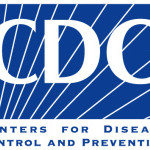- Industry: Government
- Number of terms: 6326
- Number of blossaries: 0
- Company Profile:
A bacterial disease transmitted by infected ticks. Human beings may come into contact with infected ticks during outdoor activities (camping, hiking). Symptoms include fatigue, chills, fever, headache, joint and muscle pain, swollen lymph nodes and a skin rash (in a circular pattern). Long-term problems include arthritis, nervous system abnormalities, irregular heart rhythm and meningitis. Lyme disease can be treated with antibiotics. A vaccine was available from 1998 to 2002.
Industry:Health care; Pharmaceutical
Small white blood cells that help the body defend itself against infection. These cells are produced in bone marrow and develop into plasma cells which produce antibodies. Also known as B cells.
Industry:Health care; Pharmaceutical
A large cell that helps the body defend itself against disease by surrounding and destroying foreign organisms (viruses or bacteria).
Industry:Health care; Pharmaceutical
A contagious viral disease marked by the eruption of red circular spots on the skin.
Industry:Health care; Pharmaceutical
A group of cells that help the body defend itself against disease by remembering prior exposure to specific organisms (e.g. viruses or bacteria). Therefore these cells are able to respond quickly when these organisms repeatedly threaten the body.
Industry:Health care; Pharmaceutical
Inflammation of the brain and spinal cord that can result in permanent brain damage and death.
Industry:Health care; Pharmaceutical
("men in joe en sef uh LIGHT iss") -- inflammation of the brain and meninges (membranes) that involves the encephalon (area inside the skull) and spinal column.
Industry:Health care; Pharmaceutical
Tiny organisms (including viruses and bacteria) that can only be seen with a microscope.
Industry:Health care; Pharmaceutical
The soft, wet tissue that lines body openings specifically the mouth, nose, rectum and vagina.
Industry:Health care; Pharmaceutical
